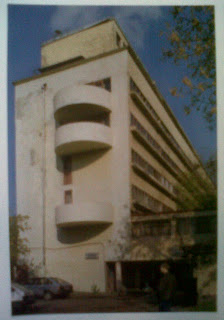Last weekend I went I to see the movie “The Ides of March” (trailer bellow). The movie is good; the story isn’t new, but still, worth repeating. Does the ends really justify the means? Machiavelli’s phrase is old, his words are still important. We tend to think that this question just relate to politics. But does it really?
I do have some maybe ingenuous thoughts that I could contribute to a better world. My ambitions provided me some challenging questions: What to do? How to get there? How to make a difference? etc. And I have worked pretty hard at the past years to answer those questions, to deal with those answers. And I cannot complain. I’ve worked with amazing people, at challenging projects and obtaining great results. Sometimes I even get the feeling that I might be really good in what I do and maybe make a difference. So, if I just work harder, if I just try harder, if I just think more, if I just give more... I might get there. But when I realise, by doing so, I find myself in this tornado of ideas and thoughts, crazy about getting something done, inspired by the possibility of success, obsessed about making a difference. Less hours of sleep, less time for healthy food, less laughs with my friends, less moments watching TV with my family... but of course it’s worth. After all, I am fighting for a change. Sometimes I even feel that I am actually in some kind of ring: my heart is beating fast, I am jumping in the same place, my eyes pop out in the expectation for the next move... and I may win. I may change something.
Is really that what I want for the world? The better world has racing hearts, nervous bodies and instable minds? How can I use the means that disagree with the kind of world that I want? And how I just don’t realise that by doing so I am not changing the world, but changing myself. Instead of being someone who could bring a change, I got changed.
This reminds me about one episode that I witnessed once. I was at a seminar and a friend of mine, who were still finishing her master degree, had been strongly criticised by a more senior lecturer about the paper that she had presented. Unluckily to the lecturer, my friend was supervised by the man who was the head of the seminar. So, when it came his time to speak, he strongly diminished the lecturer, he talked about how her posture wasn’t the proper one for a friendly seminar group. Strong recrimination and silence. Everyone thought that what he did was amazing. I thought that he had just done the same as the lecturer: to stop her violent attitude, he assumed a violent attitude himself. What difference did he really make?
So the question comes to: how to not lose track of who we are and what we want when facing the challenging events that life put in front of us? Maybe the big challenge is not to change the world, but to remain ourselves. No fights, no podium, no trophy, no big ending, no victory lap… but some integrity. Is this less adventurous?
ps: sorry for not writing last Tuesday, I wasn't feeling well ;)











